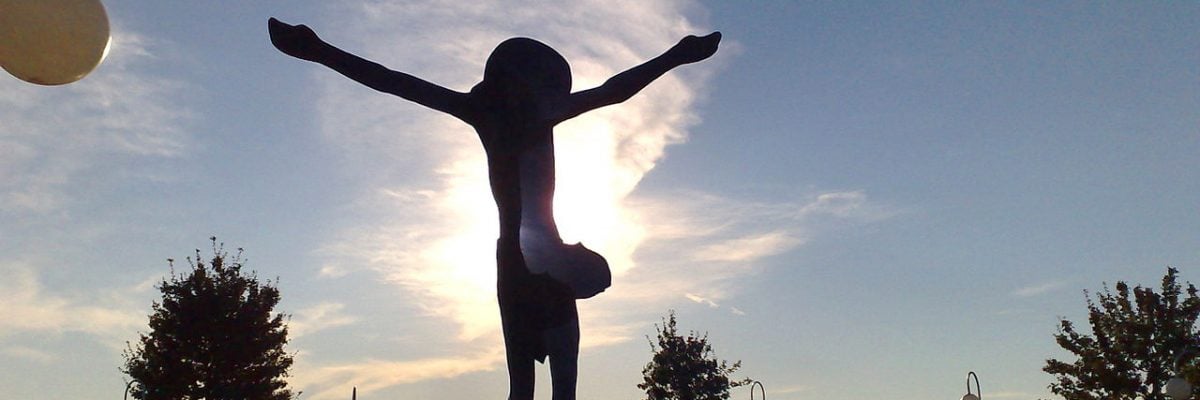
On February 11, Pope Francis has appointed a special envoy to study the pastoral aspects of the situation in Medjugorje. The envoy includes Archbishop Henryk Hoser of Warsaw, Poland, and his mission is expected to be completed by summer.
This is the first major development in the Medjugorje story in the last few years, and many have been speculating on its significance.
Background on Medjugorje
Beginning in 1981, a group of six young people began to report apparitions of the Virgin Mary. Several of the seers, now adults, report continuing to receive apparitions on a frequent, even daily, basis.
The reported apparitions have proved controversial.
A large number of people have embraced them as authentic, and Medjugorje (located in Bosnia-Herzegovina, part of the former Yugoslavia) has become a major site of pilgrimages. However, the bishops who have had the pastoral care of the area, and who have the responsibility for making evaluations of apparitions reported in their territory, have concluded that the apparitions are not authentic.
The current bishop, Ratko Peric, offers a summary of the situation on his diocesan website. He concludes:
The Church, from the local to supreme level, from the beginning to this very day, has clearly and constantly repeated: Non constat de supernaturalitate [i.e., the visions are “not agreed to be of the supernatural”]! This practically means no pilgrimages are allowed that would presuppose any supernatural character to the apparitions, there exists no shrine of the Madonna and there are no authentic messages, revelations, nor true visions!
The situation has been complicated by the opposition that has been shown to the bishop by local Franciscans, who have championed the visions.
The Holy See intervenes
According to the norms the Church uses in evaluating apparitions, the Holy See can intervene in particular cases (see Norms III:3), and it chose to do so here.
In 2010, Pope Benedict created a special commission to study the Medjugorje phenomenon, and in 2014 the commission delivered its findings to the Congregation for the Doctrine of the Faith.
The Congregation would then make its recommendations to the pope, who would make the final decision.
In 2015, Pope Francis told reporters:
We are close to coming to a decision. And then the results will be communicated. For the moment, all that is being done is to give guidelines to the bishops, but along the lines that will be taken.
Thus far no decision has been announced. The appointment of Archbishop Hoser to study the pastoral situation in Medjugorje is the first major development since this interview.
Archbishop Hoser’s Mission
According to a press release issued by the Holy See Press Office:
The mission has the aim of acquiring a deeper knowledge of the pastoral situation there, and, above all, of the needs of the faithful who go there in pilgrimage, and on the basis of this, to suggest possible pastoral initiatives for the future.
It also stated:
The mission will therefore have an exclusively pastoral character. Archbishop Hoser, who will continue to exercise his role as bishop of Warsaw-Prague, is expected to finish his mandate as Special Envoy by summer of this year.
Greg Burke, spokesman for the Holy See, emphasized two further points:
- That Archbishop Hoser will not be conducting an “apostolic visitation”—a move normally used to investigate and expose problems.
- That he will not be looking at doctrinal questions or whether the apparitions are authentic, as this is the competence of the Congregation for the Doctrine of the Faith.
Vatican Radio also notes:
Burke said, “The Special Envoy of the Holy See will be in contact with the diocesan Bishop; the Franciscans, to whom the parish of Medjugorje is entrusted; and with the faithful” of Medjugorje.
The significance of Archbishop Hoser’s mission
A natural question is what significance Archbishop Hoser’s mission has—what does it portend regarding the future?
One implication is that the Holy See is getting closer to announcing a decision regarding Medjugorje.
In 2015, Pope Francis indicated that a decision was nearing. It would be prudent to study the pastoral situation in Medjugorje before announcing it so that the decision could be implemented in the best way possible.
The Holy See’s statement that Archbishop Hoser’s mission is expected to be completed by summer indicates that we should not expect the decision to be announced until late this year at the earliest. Given the speed at which the Holy See has been moving on this question, it could well be considerably longer before any announcement.
Of greater interest than the timing of the announcement is what its likely content will be. The decision will likely fall along one of three lines:
- The Holy See approves the Medjugorje apparitions and formally approves the site as a place of pilgrimage connected with them.
- The Holy See does not approve the apparitions but allows Medjugorje to be used as a site of pilgrimage provided the apparitions are not portrayed as supernatural.
- The Holy See does not approve the apparitions and prohibits pilgrimage to Medjugorje.
Which of these is most likely?
Evaluating the options
The first option is unlikely. It would amount to a dramatic reversal of the Church’s stance to date.
Not only would it reverse the decisions reached by the local bishops and bishop’s conference, it would also reverse the Holy See’s policy, which has been (1) to prohibit the faithful from participating in events where the seers present their apparitions as authentic and (2) to disallow official pilgrimages to Medjugorje that present the apparitions as authentic (see this for more information).
In addition, Pope Francis has, on more than one occasion, made remarks suggesting that he does not regard the apparitions as authentic.
Most recently, on November 25, 2016, Pope Francis was asked a question in which he again expressed the view that the Virgin Mary does not send messages on a regular, daily basis.
The third option—not approving the apparitions and telling potential pilgrims to stay away from Medjugorje—also seems unlikely.
The Holy See knows that this would come as a great shock to many supporters of Medjugorje and could disturb their relationship with the Church and its pastors.
While some critics of Medjugorje might argue that this would be the best solution, despite the anguish it would cause in the short term, the Holy See is likely to try to find some way to not approve the apparitions without crushing their supporters.
Allowing Medjugorje to continue to be a place of Marian prayer, without approving the apparitions, could be seen as a promising way to do this.
That the Holy See is not envisioning totally shutting down pilgrimage to Medjugorje is suggested by the wording of the press release. Archbishop Hoser is asked to study “the needs of the faithful who go there in pilgrimage, and on the basis of this, to suggest possible pastoral initiatives for the future.”
While none of the three options is impossible, and while the Holy See is being guarded in what it says on this issue until the announcement is made, Archbishop Hoser’s pastoral mission suggests that the second of the three options is the more likely.
Further, the second option would amount to a formalization of the approach the Holy See has been taking toward Medjugorje, and in his 2015 interview, Pope Francis said the guidelines then being sent to bishops were “along the lines that will be taken” in the final announcement.
What should we do?
Several things suggest themselves:
- Pray for all involved in making the decisions concerning Medjugorje, that they will make the best decisions possible.
- Be patient, recognizing the pace at which the Holy See has been working on this issue.
- Do not get too emotionally invested in this issue. The public revelation God has given the Church in Scripture and Tradition is transcendentally more important than private revelations, whether authentic or not.
- Be prepared for the announcement to be different than what one might expect or prefer (regardless of the view one takes of Medjugorje).
- Resolve that, no matter what decision is made, one will not allow it to harm one’s relationship with the Faith and the Church.
Photo: A statue of Christ in Medjugorje.



